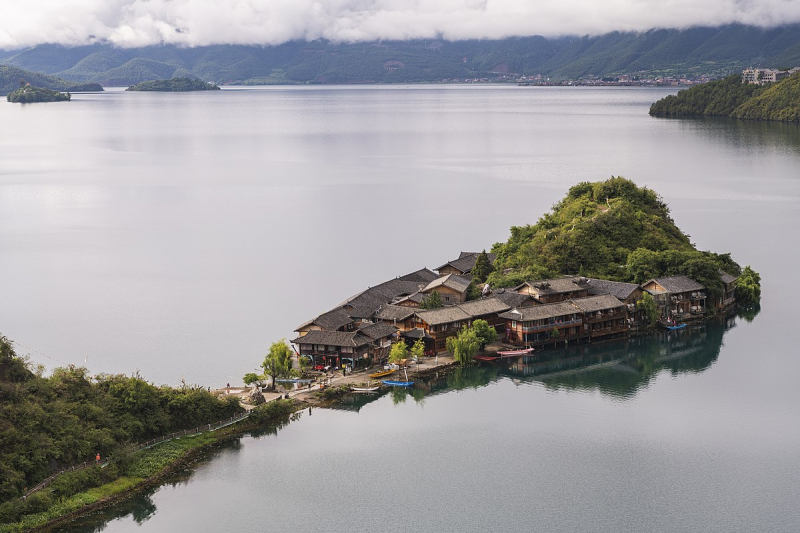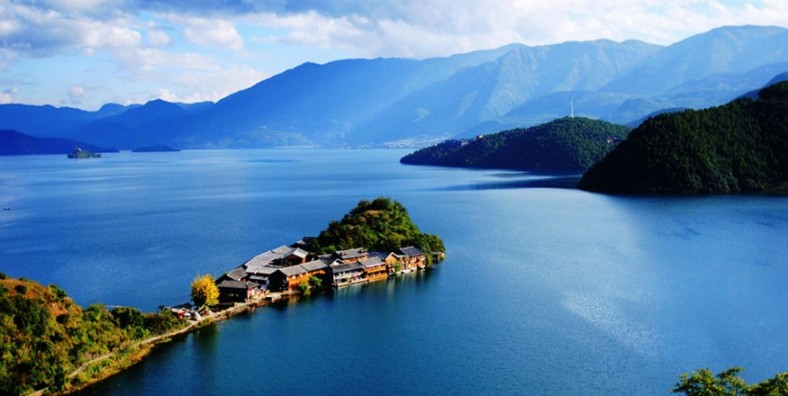Lugu Lake

As the third-deepest freshwater lake in China and the tallest lake in the Yunnan Province, where the Mosuo, Yi ethnicity predominates, Lugu Lake was originally called the lake in the valley because, in the Mosuo language of the Naxi nationality, Lu signifies valley and Gu denotes inside. The captivating Lugu Lake made up of 5 islands in the lake, 4 bylands, and 1 long island on the lakeshore, all in distinct shapes, is situated in southwest Sichuan and southeast Qinghai Tibet Plateau and serves as the ideal hub for Shangri-La trip circuits.
The Mosuo people, who dwell around the lake, are recognized as the Last Kingdom of Women in the world and the Living Fossil of Human Matrilineal Society because of their archaic maternal family rituals and strange male-leaving marriages. An American academic previously referred to Lugu Lake as a magnificent home for immortals.
The finest time of year to take pictures of Lugu Lake later falls, when flowers bloom into picturesque paintings and trees line the coast dressed in a variety of hues. Winter is the finest time to observe waterfowl since many uncommon birds, like swans, black-necked cranes, and others, migrate here to live. The sole theme museum systematically showing Mosuo history, culture, and folk practices is the Mosuo Museum, which welcomes visitors interested in local culture. More lovely natural areas include Lover Beach, Daluoshui Village with old ethnic buildings, and Bay of Goddess, a serene bay recognized as being in eastern Hawaii.
Surface area: 48.5 km2
Location: Shared both by Luguhu Town, Yanyuan County, Liangshan Yi Autonomous Prefecture, Sichuan Province & Yongning Village, Ni











